Amalfi is my favourite place in southern Italy. Not just the pretty town itself, but the villages around it like Scala, Ravello and Tramonti high above the coast. The scenery is spectacular and the food and wine delicious. But what really makes the Amalfi Coast special is the people.

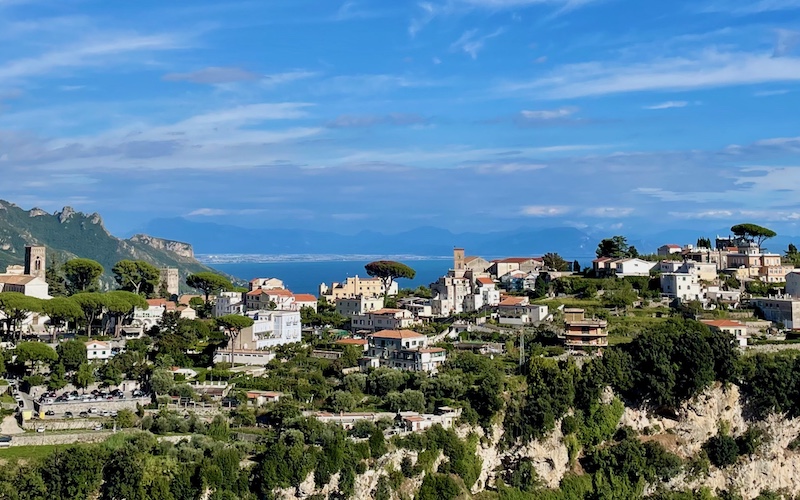
When visiting the Costiera Amalfitana, I’m always most excited about the people I’ll meet there, and the way they love to share their passion for their land and culture. Over many visits I’ve developed friendships with locals who’ve shown me the real Amalfi Coast, away from the traffic jams and crowded beaches. High up in the clouds – where the grapes and other fresh produce grow – the air is cool, the views magnificent and the welcome warm. Here are just a few of the reasons I love any excuse for an Amalfi food and wine tour.
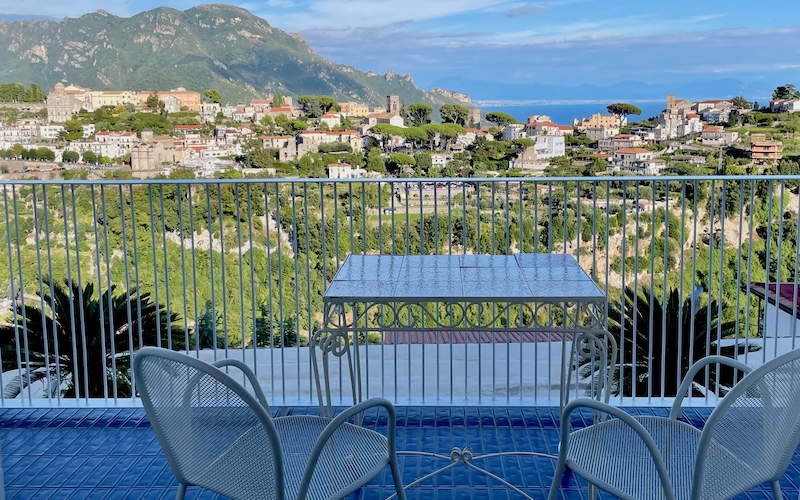
Stay Hotel Zi’Ntonio
Stefano and his team at this family-run albergo in Scala treat guests like extended family. Papa Ciccio grows much of their produce on the terraced organic farm opposite, while Mama Marinella shares family recipes at hands-on cooking classes. The terrace – with views of Ravello and the coast – is the perfect spot for delicious breakfasts (try caponata Napoletana) and aperitivi. The comfortable rooms all have balconies with stunning views.
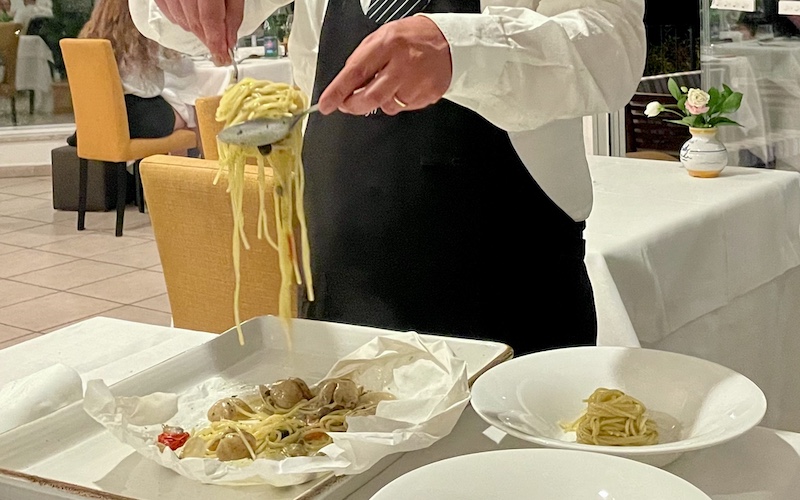
Eat Ristorante da Ciccio
One of my favourite restaurants in Italy is run by the same family that owns Hotel Zi’Ntonio: brothers Marco (chef), Giuseppe (sommelier) and Antonio (manager). Papa Ciccio’s organic produce features on the menu alongside the local fishermen’s daily catch. Service is refined yet friendly, there’s a great wine list and theatrical gueridon. Plus the best spaghetti vongole al cartoccio ever and great gnocchi Sorrentina (see video below).
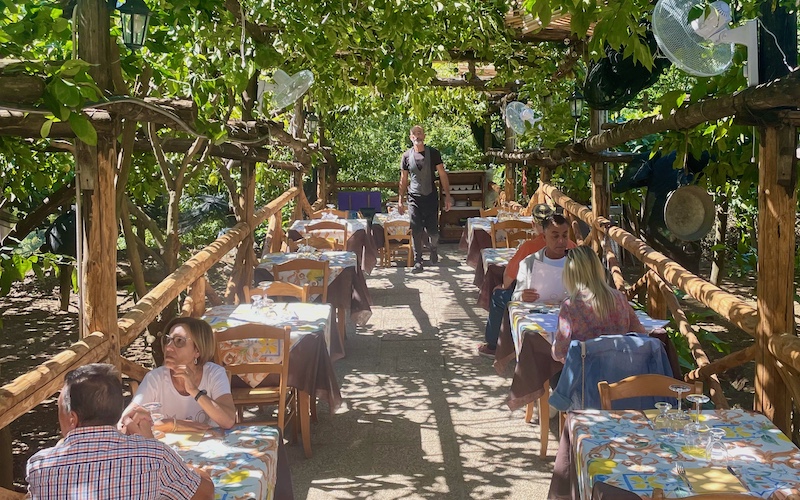
Drink (& Eat) Tramonti Wine at Agriturismo da Regina
Tramonti, in the cool hills above Amalfi, is one of only three villages in the Costa d’Amalfi appellation that can list the village name as a sub-zone. I love a glass of Tramonti wine under the canopy of lemon trees in the garden of casual Agriturismo da Regina. Alfonsina runs the kitchen with son Antonio, whose brother Cristiano looks after front-of-house. Produce, including steaks for the grill, as well as wine, is sourced locally.
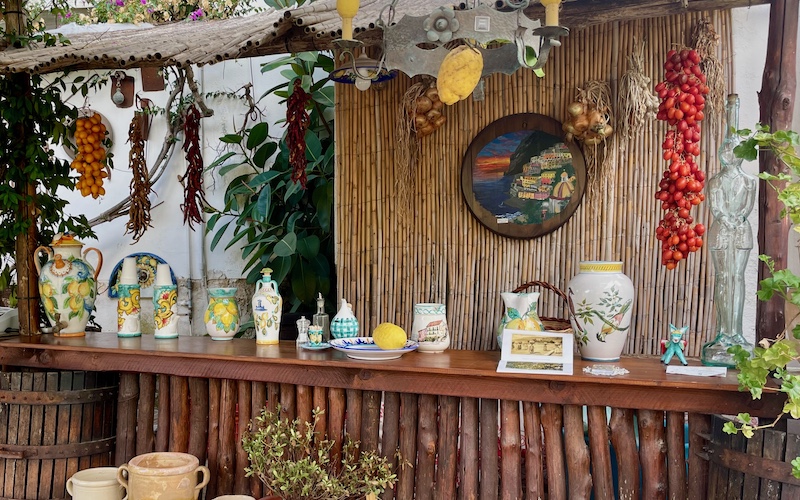
Walk Path of the Lemons & Agricola Ruocco
Amalfi lemons are famous and, whether or not you walk the full ‘Path of the Lemons’ from Minori to Maiori, it’s worth the climb to this rustic refreshment stand at the top of the ‘Sentiero dei Limoni’. Giovanni and Nadia serve lemonade, limoncello, lemon jam and marinated lemon salad, and may invite you to peek inside their beautiful garden of lemon and other fruit trees. As the path doesn’t pass through actual lemon groves, this is a treat.
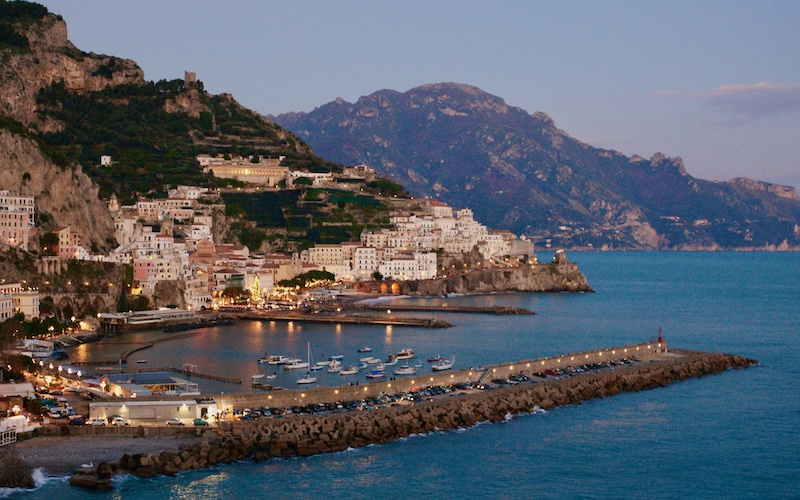
Visit Amalfi
Amalfi, once the capital of a powerful maritime republic rivalling Pisa and Genoa, is now often overlooked in favour of larger Salerno and Sorrento. Which suits me! Most visitors are day trippers, so visit early to wander uninterrupted around the harbour and up the narrow main street built into a deep ravine. Enjoy a coffee at 200-year-old Pasticceria Andrea Pansa on the main piazza, then head back to the hills before the tourists arrive.
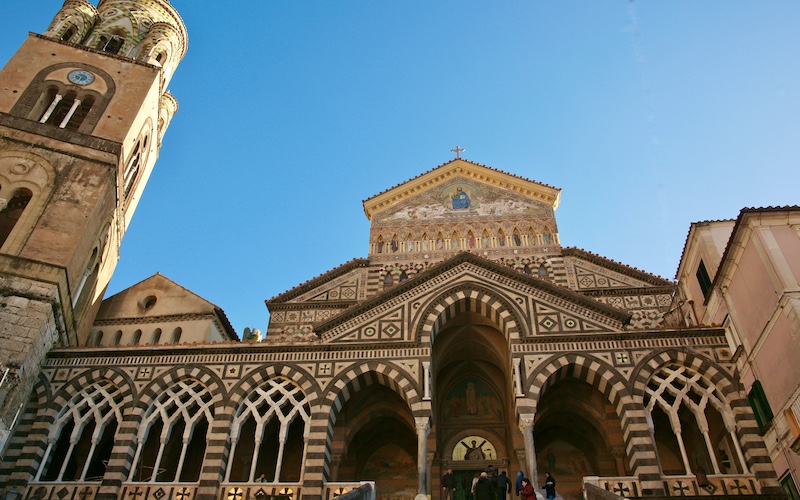
Art & Culture Sant’ Andrea
Before you leave Amalfi, visit its impressive 9th century duomo, where the bones of Saint Andrew are said to lie in the ornate crypt. The adjoining ‘Cloister of Paradise’ reflects the church’s Arabic influence and houses an open-air museum with artefacts displayed around a beautiful central garden. The Basilica of the Crucifix next door, built in 596AD, was the original cathedral and is now a museum containing gorgeous frescoes.





The Amalfi Coast stretches for 50km between Salerno and Sorrento along the Sorrentine Peninsula in the southern Italian region of Campania.
The drive along the Amalfi Coast is spectacular with soaring cliffs above and below the road, dotted with steeply terraced vineyards and lemon groves. The entire coast from Salerno to Amalfi is UNESCO listed.
Amalfi was the capital of a powerful maritime republic from 850–1200AD trading throughout the Mediterranean, rivalling Pisa and Genoa, before the rise of Venice.
Only three villages within the Costa d’Amalfi DOC appellation are sub-zones: Tramonti, Ravello and Furore. They are permitted to list their village names on the label.
Scala, high above Amalfi and opposite Ravello, is the oldest town on the Amalfi Coast. Today it has a population of just 1,500 people across 6 hamlets.
The Amalfi Coast is also known as Costiera Amalfitana and Costa d’Amalfi.
The Amalfi Coast is famous for its lemons and many dishes contain them. Mozzarella grilled between two lemon leaves is a popular Amalfitana dish. Spaghetti alle vongole is also a typical dish of the Amalfi Coast, sometimes wrapped in parchment paper and baked ‘al cartoccio’. Gnocchi Sorrentina named for the Amalfi Coast town of Sorrento is a dish ofpaotato gnocchi dressed with tomato, fresh mozzarella and basil.
The Path of the Lemons – Sentiero dei Limoni in Italian – is a steep 4km (2½ mile) path that runs between the Amalfi Coast towns of Minori to Maiori. Despite what the name suggests, the path doesn’t pass through actual lemon groves (which would be impractical and unfair to the farmers). The Path of the Lemons is largely a narrow walkway between houses and the stone walls of lemon groves with occasional vantage points that have impressive views of the Amalfi Coast. As recently as the 1970s, orchard workers carried huge baskets of freshly picked lemons along this and other narrow paths on the steep slopes of the Amalfi Coast.
The facade of the impressive Sant’Andrea in Amalfi and its bell tower were built in the Arab-Norman style seen in other churches along the Amalfi Coast. Following the collapse of part of the church in the mid 19th century, it was rebuilt in a combination of highly ornate Italian Gothic and Arab-Norman styles. The interior is a combination of Romanesque, Gothic, Renaissance and Baroque.